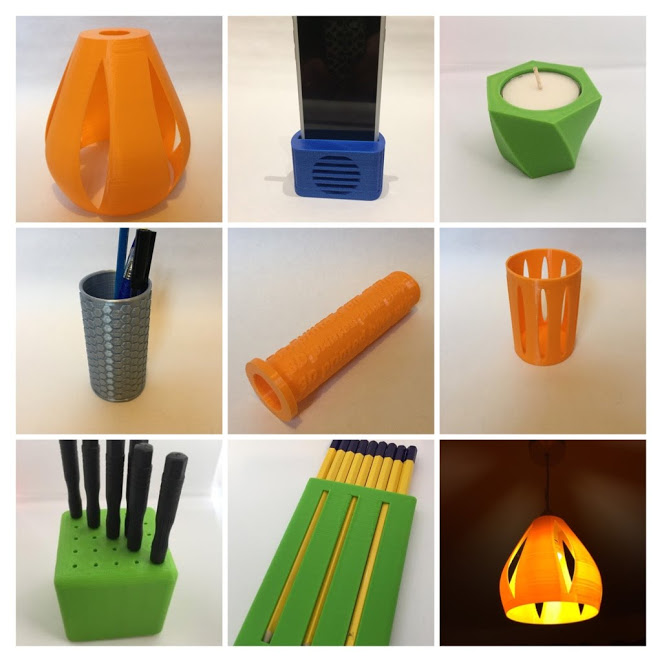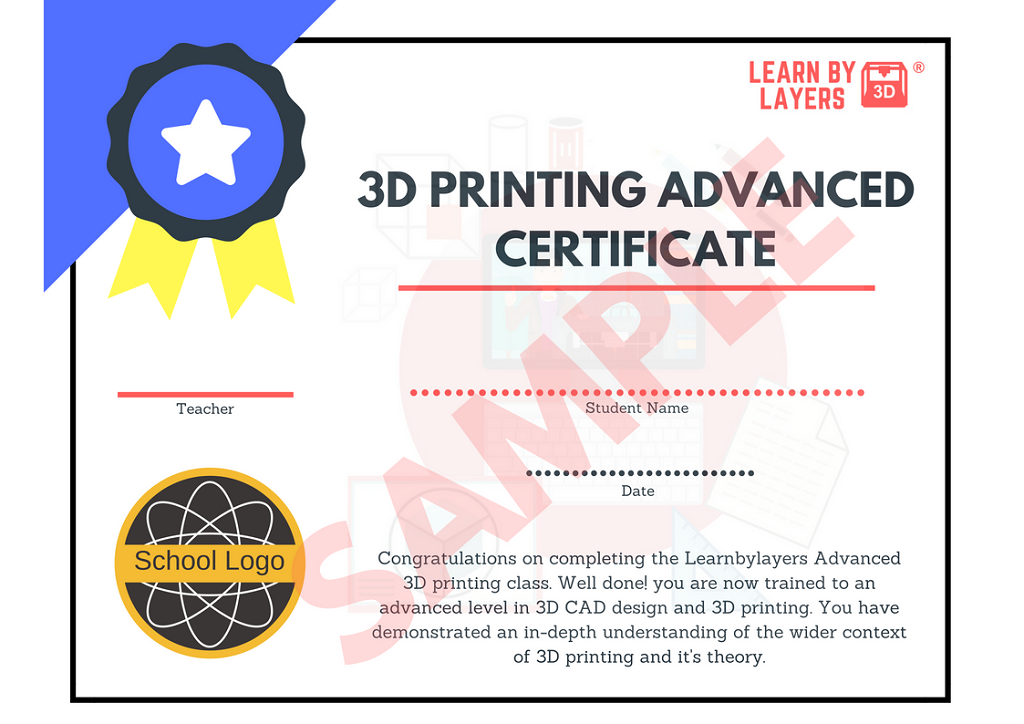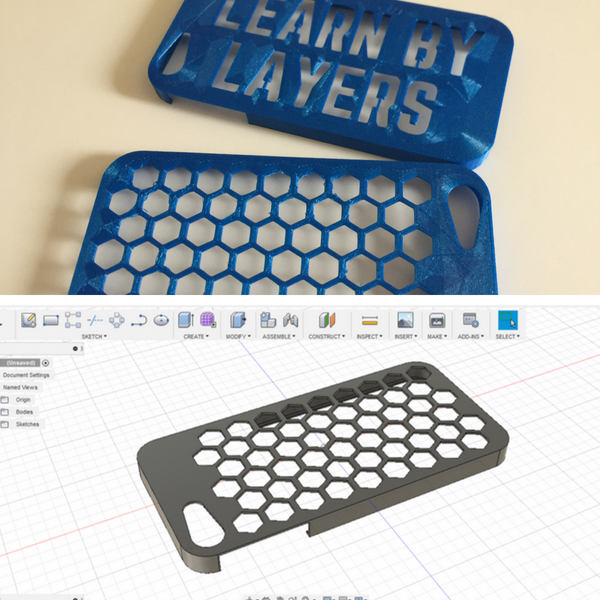![[Image: learnbylayers]](https://fabbaloo.com/wp-content/uploads/2020/05/learnbylayersphonscase_img_5eb0a80c3d636.png)
As 3D printing continues to make its way into classrooms around the world, we caught up with award-winning teacher Philip Cotton, founder of learnbylayers.
In part one of our interview, we discuss learnbylayers; in part two, we look to broader implications of 3D printing in the classroom.
Cotton’s insights into education, from the front lines as it were, offer a look into not just why 3D printing is a valuable skill but how to provide it, as we catch up on the impact of learnbylayers and a look ahead in STEM/STEAM (science, technology, engineering, [arts], mathematics) education.
![[Image: learnbylayers]](https://fabbaloo.com/wp-content/uploads/2020/05/learnbylayerscadimages_img_5eb0a80cbdfb4.png)
What types of schools are adopting learnbylayers?
“There is a wide range of schools adopting learnbylayers. In the USA these include charter schools that form part of elementary, middle and high schools. Then there are locally state funded schools, along with private schools and International schools. In Australia we have our first TAFE college teaching the curriculum. On the international scene, learnbylayers has also been adopted by many British and American independent schools in countries where English isn’t the main language e.g. Brazil, UAE (Dubai), Jordan, Kuwait, Spain to name a few. One of reasons for this, is down to the fact that they teach an American or UK curriculum and the lessons are an easy fit with their education system. We also have a small number of homeschoolers who teach learnbylayers which is great to hear.”
What could a teacher wanting to work with learnbylayers expect by signing on?
“Teachers get a lifetime ‘site’ license to the content. This means that they can download the lesson content and use it at their school. Teachers must register their school to use the content. Once they have downloaded the files, they can use them year after year in their registered school and edit them as they require. This gives teachers flexibility and puts them firmly in control. Many other curriculum providers require teachers to use online logins whenever they teach the lessons, content can’t be edited, and you don’t get access to the source files or must pay monthly subscription fees etc. These can all be barriers to teachers as online portals always get technical issues and some downtime. For 3D printing to truly expand, teachers need to have complete control over what they are teaching and learnbylayers gives them this by allowing them to have the content downloaded.”
Why do you feel schools should bring 3D printing into the curriculum?
“3D printing needs to form a core aspect to schools’ curriculum to ensure they are preparing students to be digitally literate. With 3D printing set to revolutionise nearly every aspect of manufacturing, medicine and more, teaching 3D printing to students should be on par with teaching them how to code/programme. If you didn’t teach them about 3D printing you would be denying the child a life skill that would place them significantly behind their peers who are learning about it. With 3D printing having such a positive impact upon society if we didn’t integrate it into the curriculum, eventually the industry would stop innovating and become stagnant.”

How do the lesson plans fit into a STEM/STEAM-based curriculum? How does this benefit students?
“Learnbylayers is a STEM based curriculum. Within the lessons students will learn about different aspects of science, technology engineering and math e.g. Science-based learning topic includes, the mechanical properties of flexible filament versus standard filament such as PLA/ABS. Another example would be the study of bio plastics and oil-based plastics along with their effect upon the environment. In one of the lesson students learn how the molecular structure of as long chain carbon molecule in a kernel of corn is very similar to the chains of carbon found in crude oil allowing for sustainable plastics to be developed. Within maths you have calculations to figure out for working out the costing of prints from a given weight of materials along with measuring objects to ensure models are designed to scale within specific tolerances. For Engineering students learn how to create technical engineering drawings in Fusion 360 and how to design 3D CAD models that can be used in everyday life. The technology strand of STEM, forms the spine of the curriculum, students learn how 3D printers work and the technology that is needed to make the 3D printing process happen. Learning topics range from the differences between FFF, SLA, SLS 3D printers, to how the technology compares to more traditional manufacturing techniques such as injection moulding/milling. Furthermore, student learn how to slice models on a basic level right through to customised advanced settings.
Overall this gives the student a well-rounded STEM education where they get to learn and develop a wide range of STEM learning topics under the banner of 3D printing.”
What’s next for learnbylayers? In 2018? Next year? Longer-term?
“The focus for learnbylayers is to expand the number of schools and students learning about 3D printing and keep expanding the lesson content. With the industry emerging at such a rapid rate we are constantly updating the curriculum with new lessons. In the short amount of time we have been going, we have already updated the curriculum to version 2 to ensure it keeps meeting the demands of schools and teachers. Content and teacher empowerment in the classroom are our focus.
In terms of the longer-term outlook, we are looking forward to our partnership with Kodak 3D printing who have become a reseller of the curriculum alongside their new Portrait 3D printer. This will help get the curriculum into more schools alongside their hotly anticipated 3D printer.“

What else should we know about learnbylayers and/or 3D printing in schools?
“3D printing is one of the most exciting developments in education for the past 20 years and probably since the time when personal computers made their way into the classroom. As mentioned, children learning about 3D printing means they are getting taught about technology that is changing the world. If you think about how far the technology has evolved in such a short space of time, imagine what the next ten years will hold for 3D printing and education.
One of the main things about the 3D printing is it is fun and challenging at the same time. Children like to be challenged and learnbylayers provides this, especially through the differentiated designing lessons. Once they start learning about 3D printing, they just want to learn more and that’s where learnbylayers supports teachers in the classroom. With the content being created and validated by teachers, we are unique in that we know what works and what doesn’t work in lessons. We know how lessons should flow with children and have incorporated this into the lesson. This being one of the main reasons the curriculum is so successful so early on and has expanded globally.”
Via learnbylayers











If you’re a youngin’ whose neurons have just myelinated or an educator who’s responsible for bludgeoning their brain tissue with knowledge, there’s a 3D printer option you’ll want to add to your lab list – A RIZE 3D Printer.